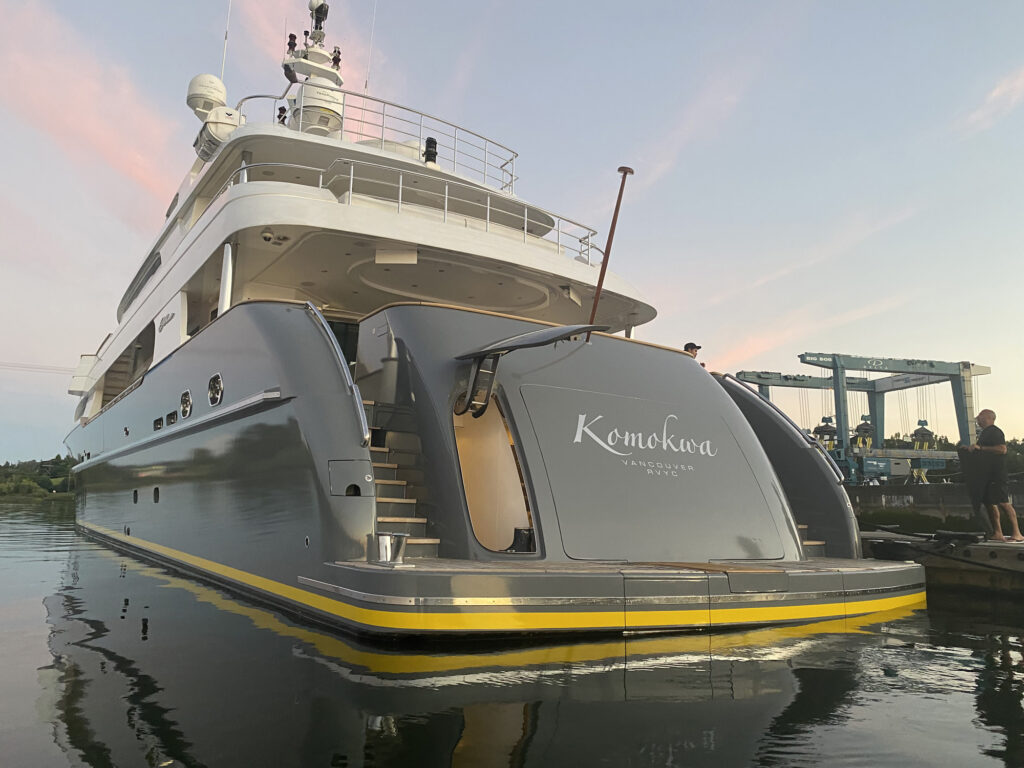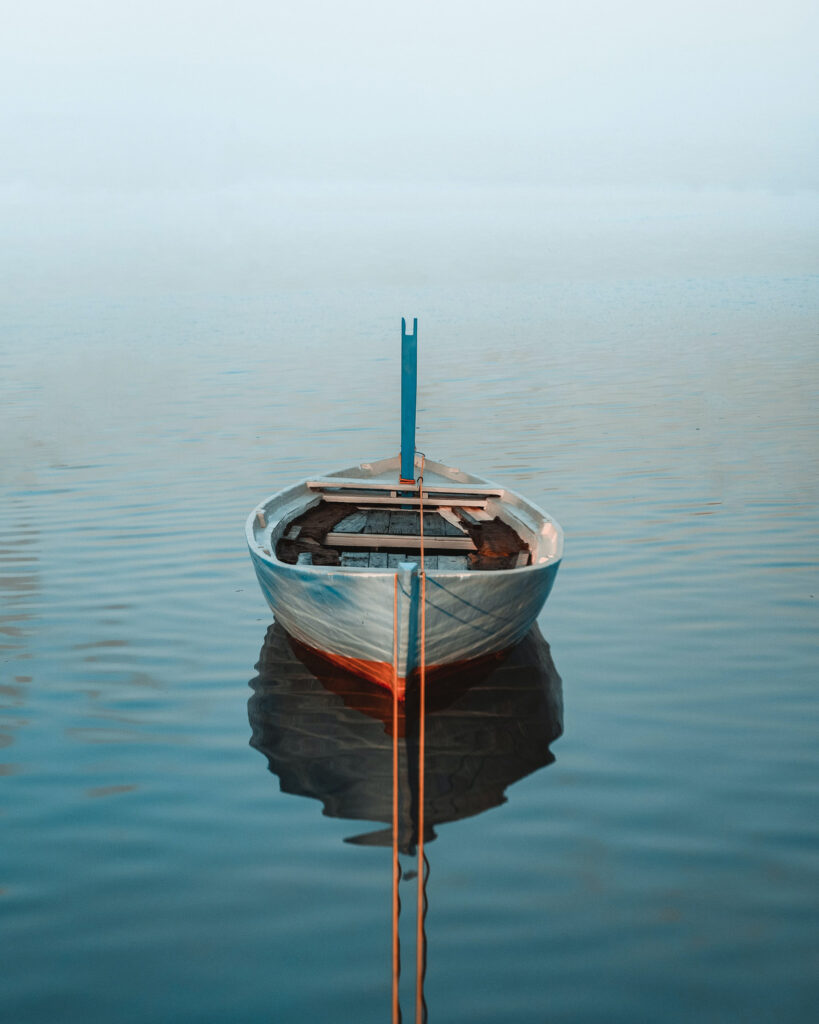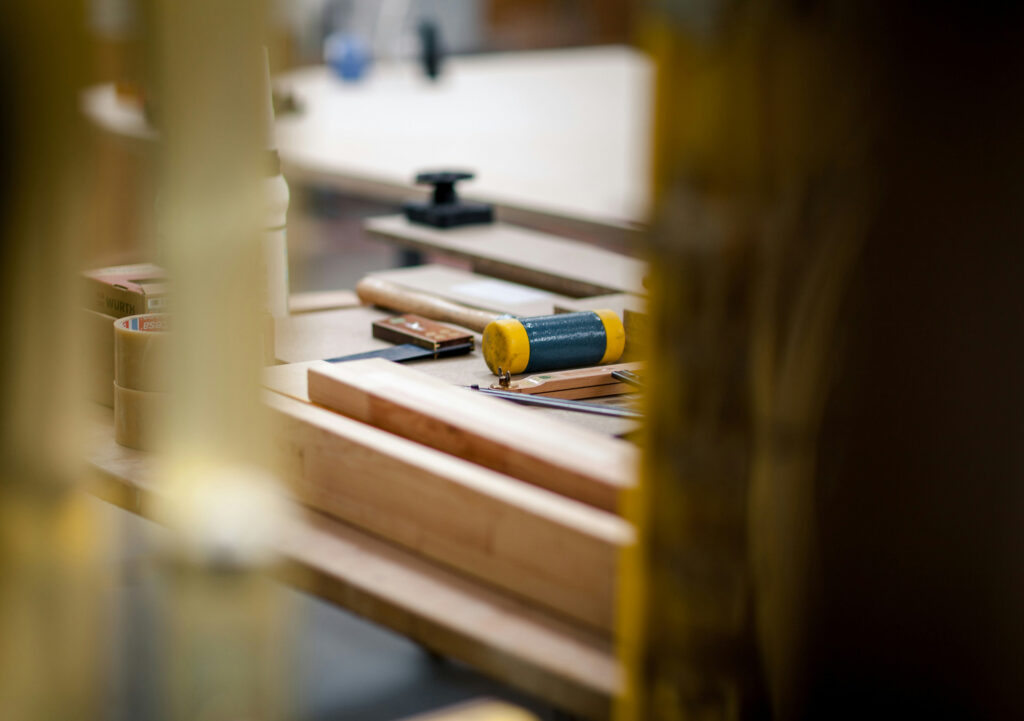
[WRAP IT UP]
BRAD COLE
BOAT GRAPHICS & WRAPS: POSSIBILITIES & LIMITATIONS
February 8, 4:15 p.m., Stage #2
[Cliff Notes] “I’ll be explaining the uses of vinyl graphics in the marine world, while also detailing out the types of material used for different types of jobs and showing pictures of jobs I’ve been involved in and how they were done.”
[Expert Bio] “I’ve been involved in boating my whole life and doing marine graphics for the last 30 years. My company, Prism Graphics, was originally founded in 1976 by boat owners who were artists. I took over the company in 1993 because I love to be the creative artist I am and be able to work on boats. I grew up on sailboats, racing and cruising in the PNW with my family. I know the challenges that come when working on them. Not only do we know what we’re doing when it comes to these unique challenges, I live on a boat, we regularly cruise in the Puget Sound and San Juans. I know I’m going to run into our customers, and I love it when I do.”
[Why Now] “Marine vinyl is a viable alternative to painting, both in boat interiors as well as exterior. It also offers some significant cost savings; the cost of wrapping something in vinyl can often be 50% or less the cost of painting. Anyone that owns a boat new or old can benefit in some way with quality vinyl graphics. There are many possibilities from full boat wraps that will transform the look to redoing interior panels that may be sun damaged, so I’ll be outlining the many uses for the material. Often, people don’t know they can fix a simple problem with vinyl.”
[HOMEWARD BOUND]
JULIE & GIO CAPPELLI
THE LONG WAY HOME: SAILING THE PACIFIC LOOP
February 10; 12:15 p.m.; Stage #2
[Cliff Notes] “Last summer (2022) we bought our first bluewater sailboat in San Diego, California, and decided to bring it back to the Pacific Northwest for a refit before sailing to distant shores. Five months after purchase, we set sail for Mexico, Hawaii, British Columbia, and finally Washington, sailing 10,000 miles through the Pacific. In this seminar, we’ll be sharing stories of adventures, challenges, and preparations that made this journey a success.”
[Expert Bio] “Neither of us grew up sailing or fixing boats, so when we decided we wanted to sail the world, we first attended nine months of classes at the Marine Technology Center in Anacortes, Washington. We both graduated with professional certifications in boat repair, which enabled us to safely and swiftly evaluate the boat we purchased and confidently address maintenance issues ourselves. We also invested in an offshore sail training expedition with John Neal through Mahina Offshore Services that gave us the training and safety ethos we needed to feel comfortable heading offshore. Our careful selection plus the completion of proper education and training prepared us for this ambitious undertaking, and no doubt fueled our success. And, we’re just getting started! This cruise showed us that we’re capable and that we love offshore sailing and ocean cruising. As soon as we finish our winter refit layover, we’ll be heading out on an even bigger adventure that we hope to share at the 2025 show.”
[Why Now] “While it’s not necessarily cutting edge, per say, this is a rare cruising itinerary. Very few cruising boats make the journey back north once they’ve chased the warm weather south. So few that the Prince Rupert Yacht Club could only remember one other cruising boat arriving from a big Pacific loop, and they happen to be friends of ours! The offshore route to get to Washington was certainly longer than heading straight up along the coast, but with proper preparation, it can be a fun offshore adventure rather than an uncomfortable coastal bash. Current El Nino conditions are affecting both Mexico weather patterns and sailing conditions offshore, making it even more important to be flexible and adaptable with your cruising plans and goals.”

[TENDER LOVIN’ CARE]
KATIE MALIK
TENDER TALK: FINDING THE BEST DINGHY FOR YOU
February 6; 3 p.m.; Stage #1
[Cliff Notes] “The best dinghy isn’t just a ship-to-shore tender—it is a boat that’s fun to use in its own right. In this seminar, we’ll look at different types of tenders, from classic rowboats and sailing dinghies to contemporary inflatables and RIBs, and talk through the pros and cons of each and learn who is the ideal user for each type of vessel. A dinghy is a humble little boat that’s often treated as an afterthought, but it is a surprisingly wonderful way to make the “big boat” even better. A good dinghy helps you tailor your boat to your tastes, shows your personality, and creates the lifestyle you seek whether you’re a serious cruiser or a weekend warrior.”
[Expert Bio] “As the general manager of Gig Harbor Boat Works, and the daughter of the original founder, I’ve spent a lot of time rowing and sailing dinghies over the course of my life. One of my favorite parts of my job is helping people figure out which dinghy is right for them, talking through how they picture themselves using their boat, looking at the mounting options they have on their yacht, and envisioning how the tender’s design can complement their mothership. While I personally love the appeal of a classic traditional-style dinghy, I understand they’re not for everyone, and make sure to point people toward the type of dinghy that will best suit their needs.”
[Why Now] “More and more people are asking about electric and environmentally friendly options for tenders. Though yachts almost always have a fossil-fuel powered engine (even in sailboats), the tender is a place where people can use wind power, enjoy a quiet evening row, or take advantage of electric options to minimize their impact on the environments they’re exploring. And in this era of high energy prices, people are realizing that wind and human power are free—so there’s a resurgence of interest in rowing and sailing. Everything old is new again. Tenders are such an essential part of yacht ownership that anybody who owns a yacht, or is considering buying one, should be interested in this seminar. Even those who don’t have the inclination or budget to own a yacht—who just want a standalone small boat that’s enjoyable in its own right, or are curious about rowing or sailing—will find this seminar helpful. Additionally, when it comes to traditional dinghies in particular, a lot of people fall in love with the classic aesthetic. But at the same time, they find them intimidating—perhaps because they are unfamiliar with them, are concerned they’ll be too ‘tippy,’ or are afraid the learning curve will be too steep. This will be a great opportunity to separate fact from fiction and learn what makes different boats row, sail, or motor better than others. Armed with that information, you can confidently pick the dinghy that’s best suited to your water lifestyle.”
[SETTING SAIL]
WENDY HINMAN + COMPANY
BECOMING A SAILOR PANEL
February 5; 3 p.m.; Stage #1
[Cliff Notes] “This session is a panel discussion of women sailors, with various levels of experience, revealing how they evolved into confident sailors. When we push ourselves to learn and grow is when we feel most alive. Boating challenges us in many ways and that is part of why we like it. Every time we go boating, we may face a new situation we have not encountered before so it requires adapting and honing our skills.”
[Expert Bio] “As someone who has raced and cruised extensively, I have met many women sailors who wonder how to become more confident on the water. I have also met many incredibly accomplished sailors who inspire the rest of us to ‘up our game.’ I am bringing together some of these women to share our experience. Personally (Wendy Hinman, moderator), I grew up sailing and have cruised and raced in venues around the globe in all sorts of boats as both skipper and crew. I spent seven years at sea, sailing 34,000 miles aboard a small, simple boat and learned the most essential ingredient aboard is a good sense of humor. I have also published articles in a variety of publications and am the award-winning author of two hit books: Tightwads on the Loose and Sea Trials. My husband and I are also currently building a wooden boat for more cruising adventures (find more on this adventure on page XX).”
[Why Now] “Many people take a sailing lesson or two and then wonder: Now what? How do you get from hearing about sailing to maybe having an experience or two to possibly cruising, racing, or even owning a boat? This panel will feature many examples of people who’ve developed boating skills and learned how to cope with the pressures of boat maneuvering to grow into confident boaters. The panel reflects a broad range of experience, so people of various levels will find these experiences interesting and inspiring. It is easy to confine ourselves to our comfort zones, but to grow we always must find ways to push past that. To develop our skills we must keep using them and expanding upon them or we will grow rusty and unable to adapt to new situations. This panel features people who have made a point of becoming competent boaters. Learn from what they did to develop their skills and overcome challenges.”

[CONSTRUCTION ZONE]
SCOTT JONES
DREAM IT, BUILD IT: BOATBUILDING IN THE PACIFIC NORTHWEST
February 9; 2 p.m.; Stage #2
[Cliff Notes] “Whether from plans or a kit, you too can build your dream boat. I’ll help you understand what is involved in a home boat build, explain the basic principles of stitch and glue boat construction, and help you avoid pitfalls. I would say that this topic is aimed at people with little to no experience in boat building, but I would expect that all but the most seasoned boat builders will walk away having learned something.”
[Expert Bio] “I managed the boat shop at the Northwest Maritime Center for nearly a decade, during which time I helped build the prototype Scamp by John Welsford, taught classes for Pygmy Boats, Chesapeake Light Craft, and even spent some time as an adjunct instructor for the Northwest School of Wooden Boat Building. I have been a part of dozens and dozens of owner-built stitch and glue boat projects. I’ve helped all walks of life build their boat, and you can (build your own boat) too.”
[Why Now] “Boating should be accessible to us all. And what better way to get on the water than in a boat you build. The prevalence of CNC shops, and then frequency in which designs are drawn in CAD, makes accurate and complex shapes now quite easy. If you’re building from a kit, often getting comfortable with handling epoxy and fiberglass is the biggest hurdle, not the shaping of the parts. It’s also worth noting that it doesn’t take a massive and well-equipped shop to build a stitch and glue boat, and that boat construction isn’t all about sanding. I would encourage the reader to drop the following assumptions: building a boat is too complex, too steeped in tradition, too expensive, out of the question. Those aren’t true. There is nothing like getting out on the water in a boat you made.”
[KIDS AT SEA]
JAMES UTZSCHNEIDER & JENNA MILLER
CIRCUMNAVIGATING THE WORLD ON A CATAMARAN WITH KIDS
February 10; 1:15 p.m.; Stage #1
[Cliff Notes] This adventurous pair is tapping into their own life experiences to lend expertise to this trendy topic. “So many young families dream of taking off on a sailboat with their kids to explore the world. We did so, circumnavigating on our cat Sophie from 2012 to 2021. Our kids were 4 and 8 when we left. We can help people understand the technical benefits of choosing a catamaran for cruising offshore, and will also discuss how to raise children while doing so—covering school, health, and connecting with a community.”
[FURRY FIRST MATES]
DIANE LANDER & ELSIE HULSIZER
CRUISING WITH CATS AND DOGS
February 8; 12 p.m.; Stage #1
[Cliff Notes] This one’s going to the dogs…and the cats too. Expert Diane Lander will tap into 30-plus years of cruising experience with dogs to outlie how to safely boat with your canine companion, while also performing a live demonstration on how to fit a PFD to your dog. Elsie Hulsizer’s portion will entail how to acclimate a land cat to a boat, how to keep them safe, and what to bring just for them. “Lots of cats sail with their people but they’re rarely visible and cat owners are often unsure what to do to make their cats comfortable,” she says. “This will fill in a gap for boaters who want to take their pets, particularly cats, with them on the water.”
[INTO THE WOOD]
WENDY HINMAN & GARTH WILCOX
BUILDING A MODERN WOODEN BOAT
February 10; 1:15 p.m.; Stage #2
[Cliff Notes] Wendy Hinman and Garth Wilcox once sailed 34,000 miles aboard Velella, a light displacement 31-footer. Now, drawing on Wilcox’s skills as a professional naval architect and experience gleaned in a circumnavigation of the world in a 40-foot double ender that barely survived a shipwreck, the pair built the cruising boat of Wilcox’s dreams. Learn about the process they’ve undertaken to construct a 38-foot boat in their backyard workshop. “Garth has created many workarounds for challenges he’s faced in building and outfitting this boat,” states Hinman. “His creativity and high standards are visible in every aspect of this boat’s design and build. His innovative approaches may spark ideas for problems other boaters face.”
>> For the most current details on seminar dates, times, and locations (which may have changed since press time), plus a complete roster of this year’s Seattle Boat Show seminars as well as general information on the full event that runs from February 2-10, go to: seattleboatshow.com.